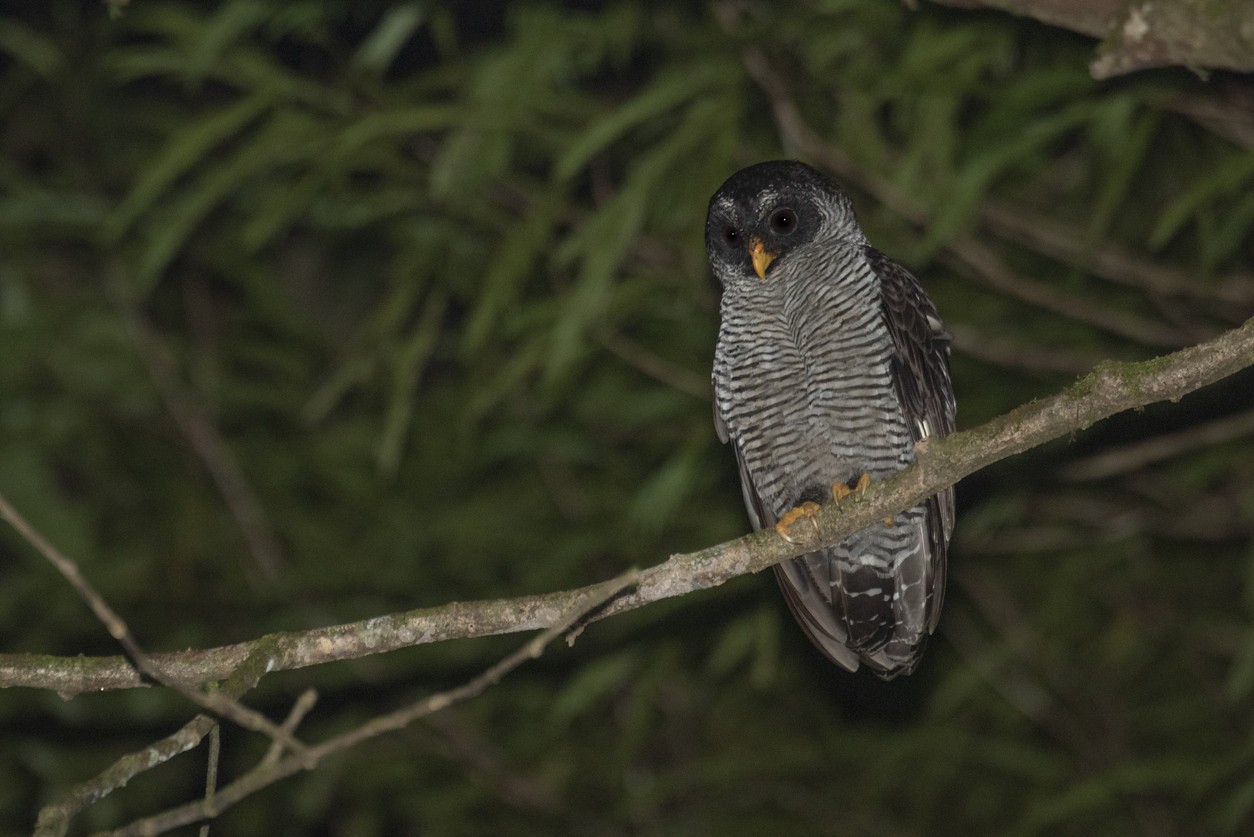Black-and-white Owl
A species of Neotropical Wood-owls Scientific name : Strix nigrolineata Genus : Neotropical Wood-owls
Black-and-white Owl, A species of Neotropical Wood-owls
Botanical name: Strix nigrolineata
Genus: Neotropical Wood-owls
Content
Description General Info

Description
The black-and-white owl is a medium-sized owl with a round head and no ear tufts. It is between 35–40 cm in length and weigh between 400-535 grams. As for most owl species, females are usually bigger than males with an average weight of 487 g and 418 g respectively. It has a striped black-and-white breast, belly, and vent. With the exception of a black-and white striped collar, the upperparts from the crown to the tail are a sooty black. The facial disc is mostly sooty black, with white “eyebrows” that extend from the bill to the collar. The beak is a yellow-orange colour, and the eyes are a reddish brown. Chicks are downy and white. Juveniles have a whitish face, dark brown upper-parts and a white-barred black underside. 
Size
33-45 cm (13-17.7 in)
Life Expectancy
20 years (wild), 29 years (captivity)
Nest Placement
Cavity
Feeding Habits
Black-and-white Owl preys mainly on insects, bats, and small mammals, but also consumes frogs and small birds. Its hunting technique is nocturnal foraging, utilizing unique adaptations to locate and capture a variety of prey with precision in the dark.
Habitat
Black-and-white Owl thrive in a range of habitats primarily consisting of humid to semihumid evergreen and semideciduous forests, often around clearings or edges. Their territories extend to partially flooded woodlands, marshy regions, and tree plantations. It's typical to spot black-and-white Owl in tall mangroves as well as in drier climates, where they favor evergreen or gallery forests.
Dite type
Carnivorous
General Info
Feeding Habits
Bird food type
Behavior
Its diet consists mostly of larger insects, but it is also known to eat small mammals, birds, and tree frogs. It is known to hunt from a perch, but has been known to hunt on the wing too. Its call consists of a series of rapid, guttural, low calls, followed by a short pause and a low, airy call and a faint, short hoot. Occasionally, it is shortened to just the last two notes, leaving out the opening series. 
Distribution Area
Its range extends from central Mexico south to the northwestern section of Peru and western Colombia, a range it partially shares with another related species: the mottled owl (Strix virgata). In total, it is found in 12 countries: Belize, Colombia, Costa Rica, Ecuador, El Salvador, Guatemala, Honduras, Mexico, Nicaragua, Panama, Peru, and Venezuela. This bird of prey also stays faithful to its range all year long as it is a non-migratory bird. 
Species Status
Not globally threatened.


Scientific Classification
Phylum
Chordates Class
Birds Order
Owls Family
True owls Genus
Neotropical Wood-owls Species
Black-and-white Owl